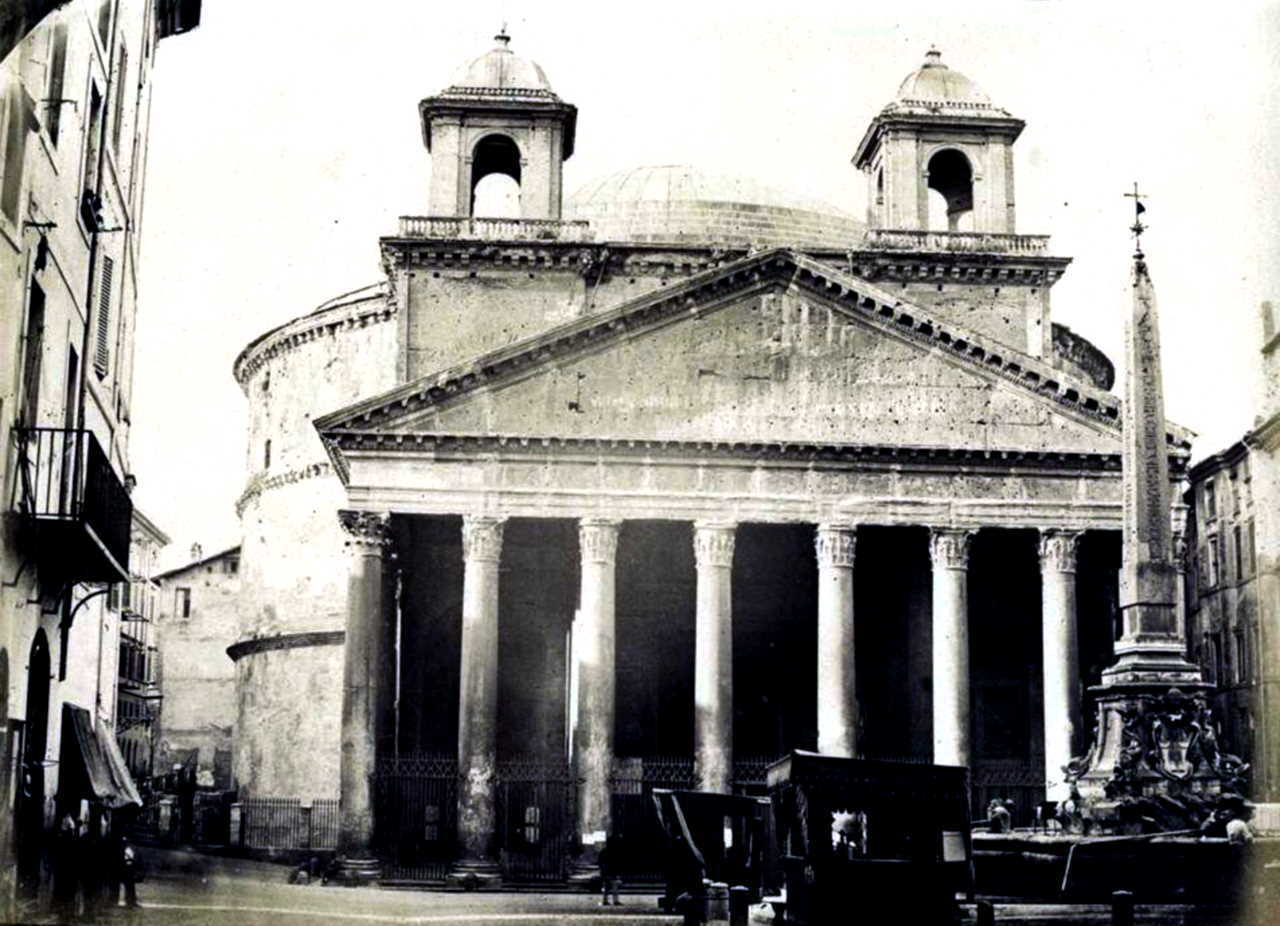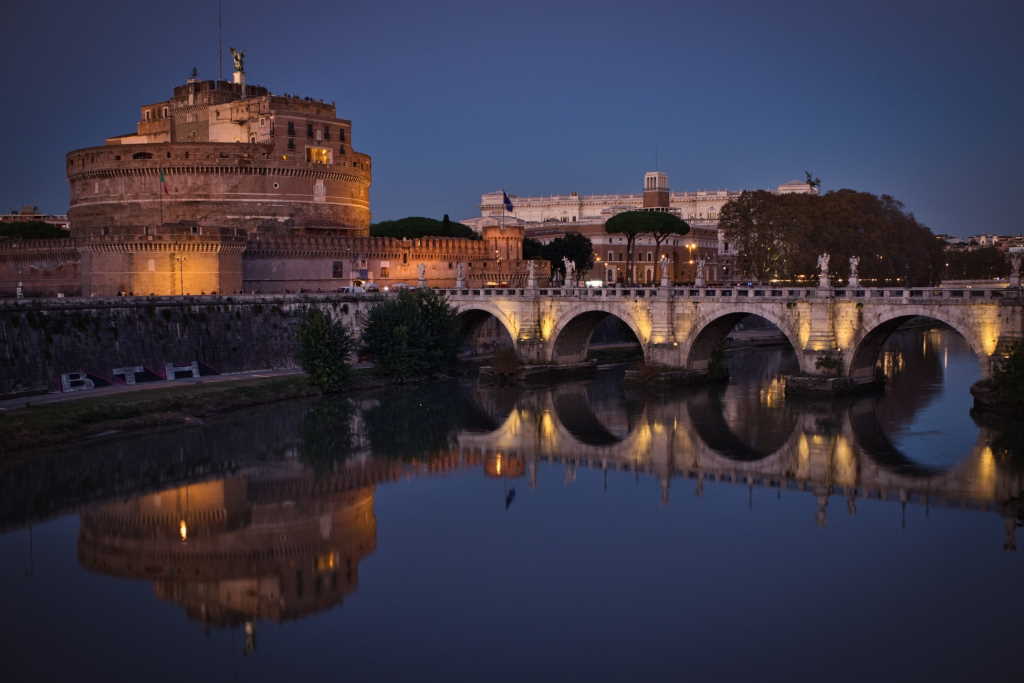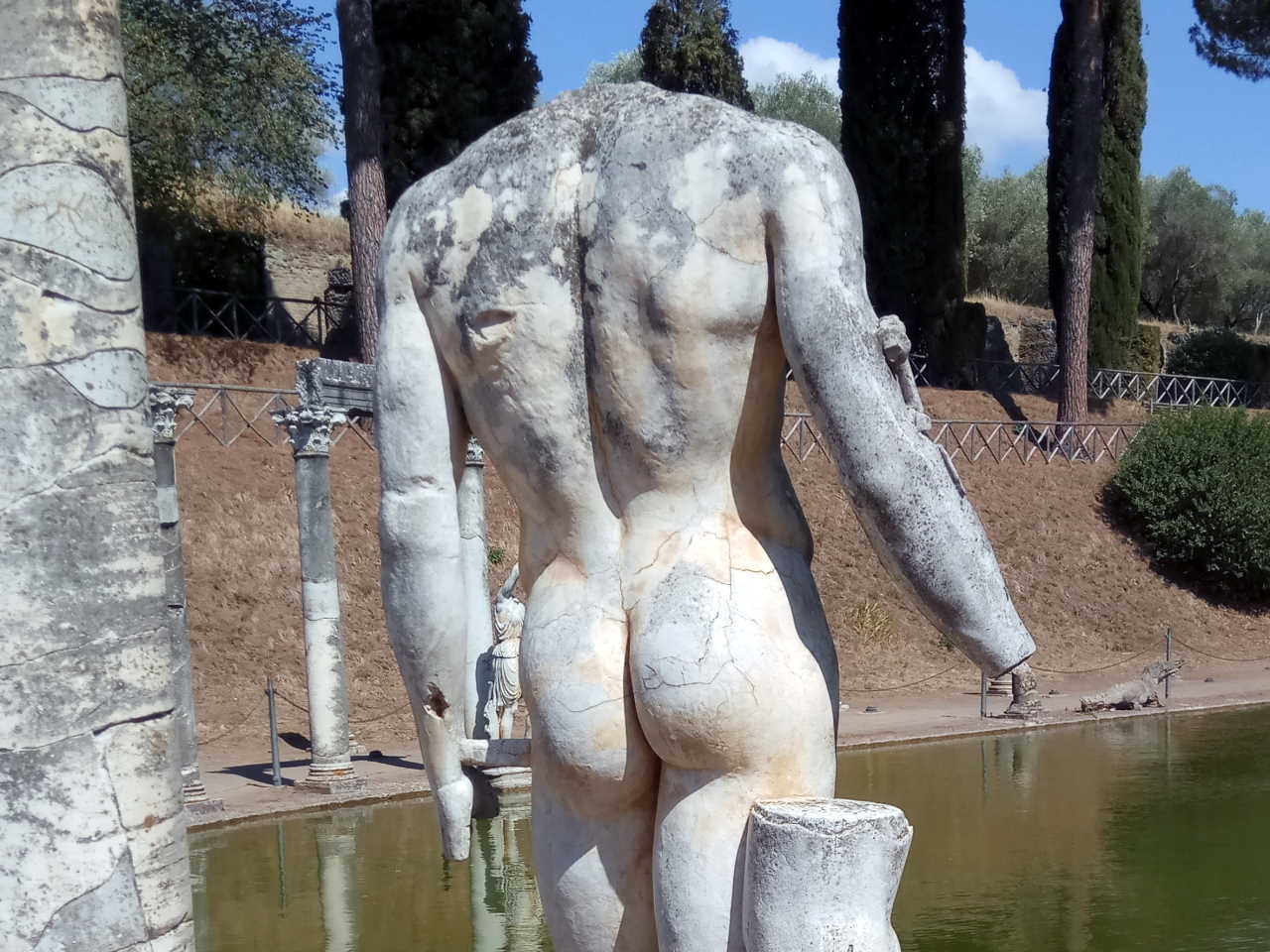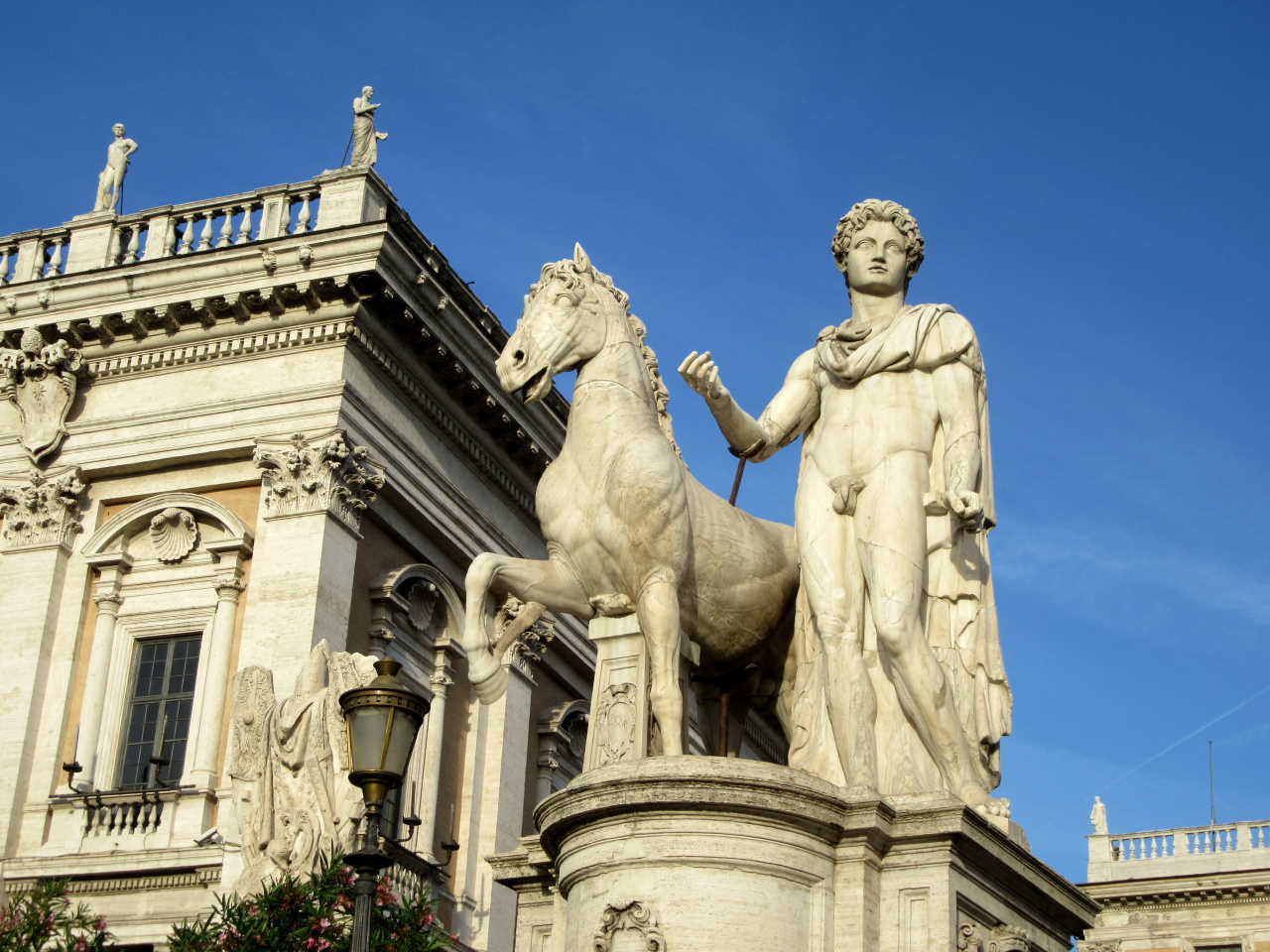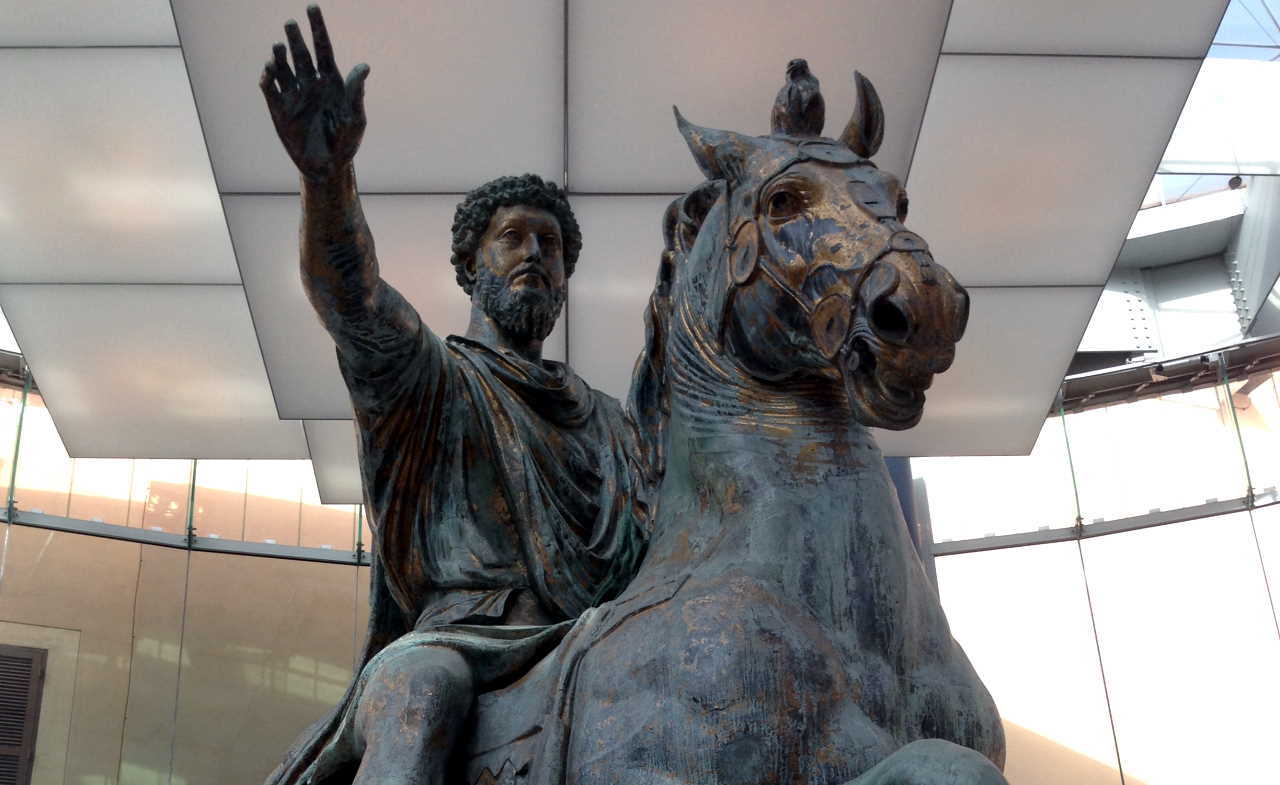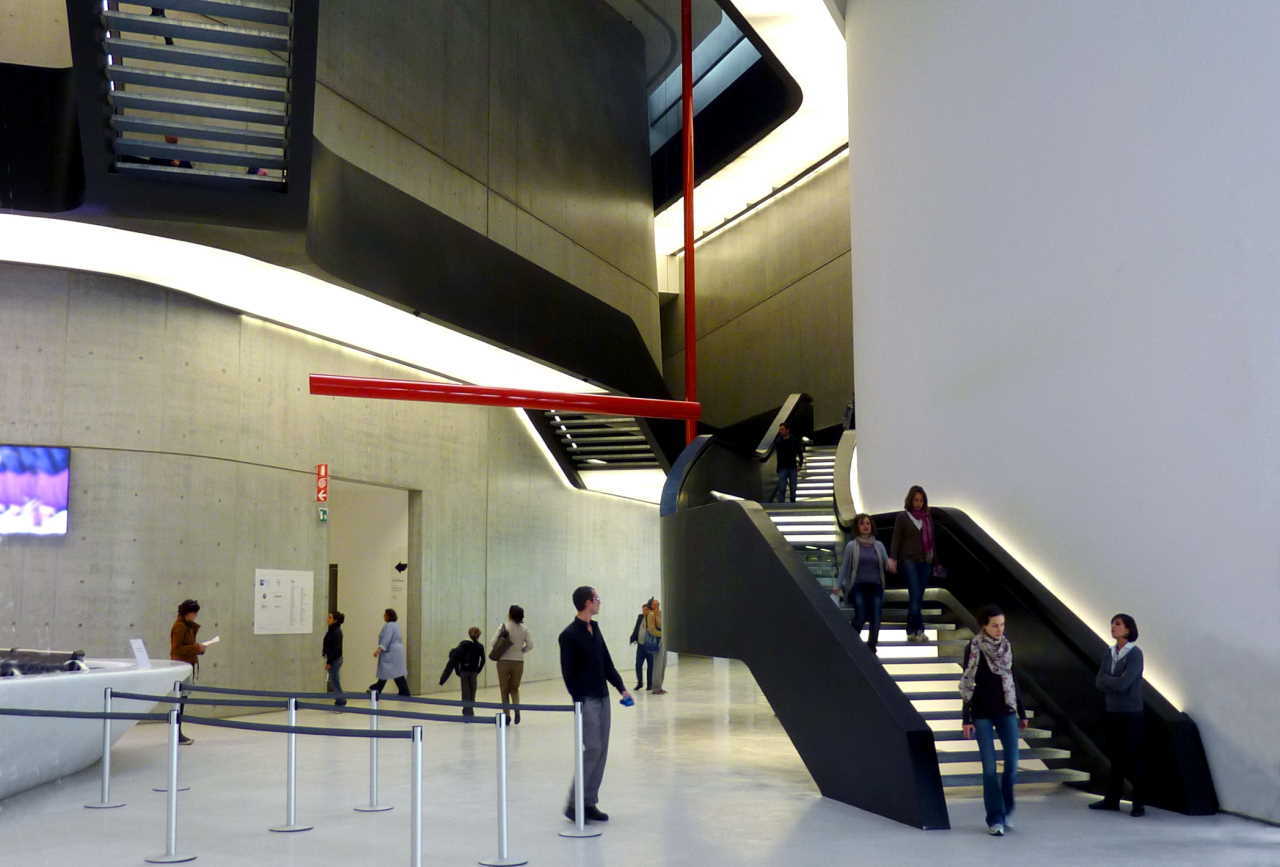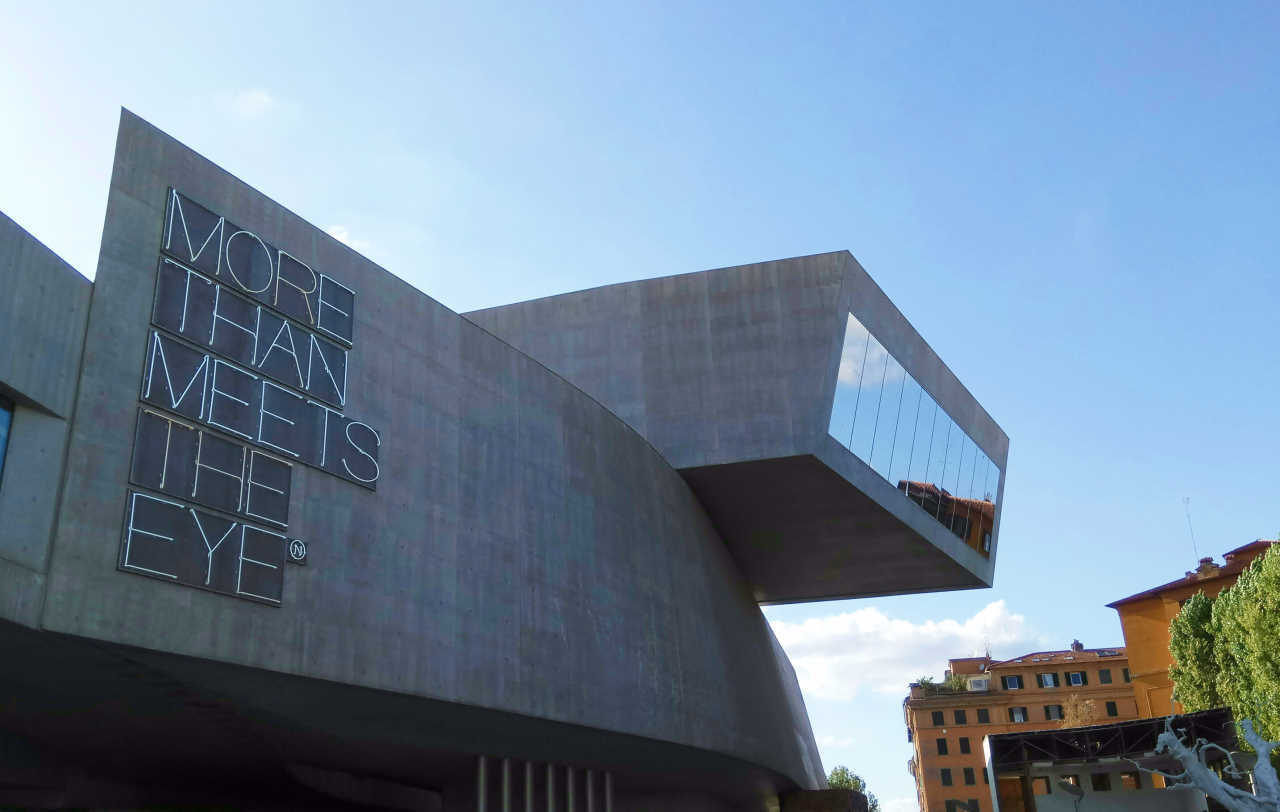Pantheon
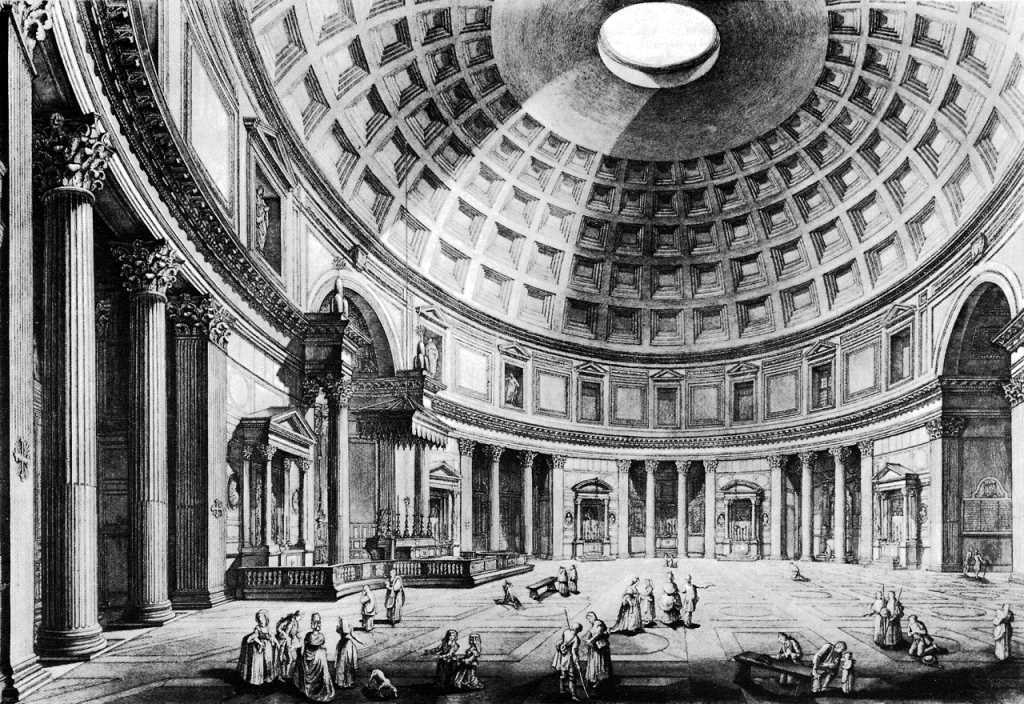
Contents
The Pantheon
Great masterpiece of Roman architecture. It is one of the ancient monuments best preserved in the world. We suggest a visit around noon, when the sun enters from the open eye on the top of the dome. Built by Agrippa and then rebuilt by Hadrian in 130 A.D.
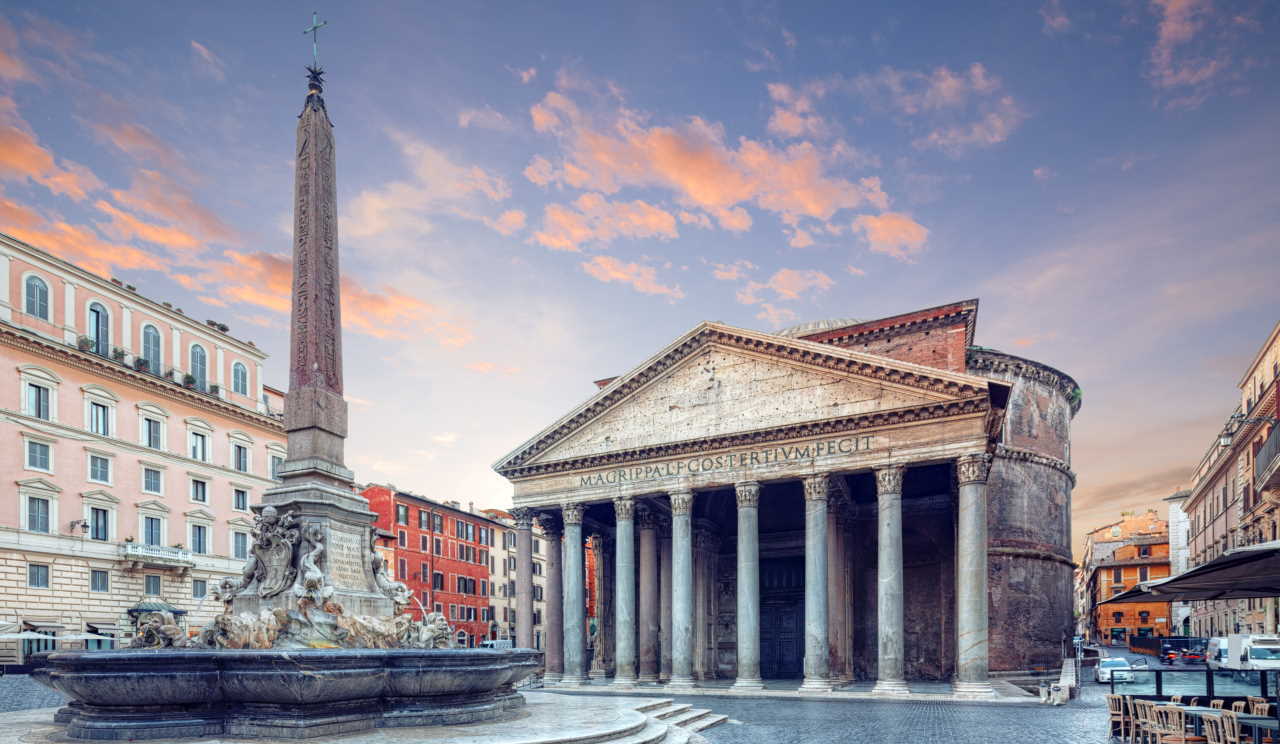
In 27 b.C., Agrippa, son-in-law and architect of Augustus, erected the Pantheon on the site where Romolus according to the legend ascended to Heaven during a ceremony. It was a common temple rectangular in shape, medium size, conceived as a place of worship for various divinities.
Through the years the temple suffered fires and other disasters, it was restaured several times till the final reconstruction by the emperor-architect Hadrian between 118 and 128 A.D.. The pronaos with its sixteen columns, the enlargement of the rotunda and the dome, the largest existing one built in brickwork up to our time, are for sure by Hadrian. Hadrian himself wishing to commemorate Agrippa replaced word for word on the temple’s façade Agrippa’s original inscription: “Marcus Agrippa, son of Lucius, Consul for the tird time, built”.
In 608 the emperor Foca handed it over to Pope Boniface IV who consacreted it as catholic church: Sancta Maria ad Martyres, masterpiece of the Roman architecture and first example of pagan temple transformed into catholic church. The temple stood originally on a base having a high staircase surrounded by a colonnaded portico on a lower level than the modern one. Originally the dome was externally covered by gilt bronze tiles stolen in 663 by the Emperor of East Constant II and later substituted by a lead covering in 735. The same happened to the bronze covering of the porticoes which was removed by the pope Urban VII and used for the casting of cannons and for the baldachin of St.Peter. Not many things were added to the original architecture: the church decorations, the tombs of great artists (Raphael) and those of the Kings of Italy. Bernini added two ugly bell towers called “asses’ears” demolished at the end of the 1800’s.
Inside the Pantheon there are also honorary busts which Pius VII had removed and transported to the Capitole, inside the Gallery (collection of busts of illustrious men) Nowadays the lack of coverings reveals the original brickwork structure with weight and thrust which support the ring. The pronaos hides the cupola from sights till the entrance in the space determined by a sphere which can be inscribed in a cylinder, finished and unfinished together. The floor is covered with polychromatic marbles so as the walls which support the huge cupola culminating in the great eye at the summit, 9mt wide, which illuminated the whole interior and served for the smoke of the sacrifices.
The axes of the building contemplates a small divertion from the traditional north-south direction: every year on the 21st June at 12,00am, summer equinoce, the sun through the eye invests the visitors entering from the main door.
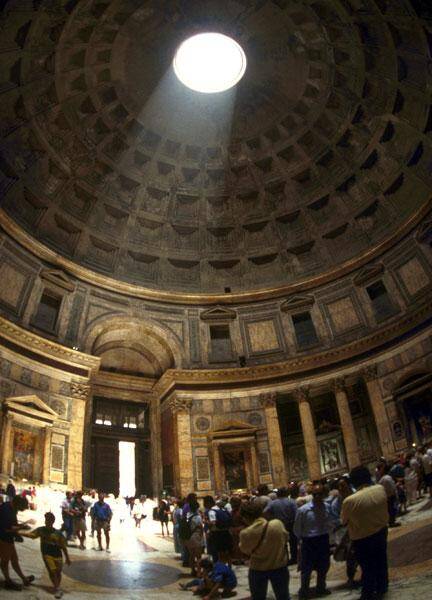
Piazza della Rotonda
Dominated by the Pantheon all around there are buildings of the 1700’s built on the ruins of the ancient portico, market-place till the first half of the 1900’s. At the centre there is a beautiful fountain by della Porta with a small obelisk
This square is right in front of the Pantheon and this grandiose monument characterizes it to such an extent that many Romans don’t know even its name: they call it simply “square of the Pantheon”
In the middle of the square, characterized by the façades of the XVIIIcentury’s palaces which surround it, stands the elegant marble fountain decorated with dolphins and maskarons made in the time of Clement XI, who had it surmounted with an obelisk in 1711. The fountain was projected by Della Porta.
Two curiousities are note worthies: a plaque on the wall of the edifice right in front of the Pantheon which reminds us when the square , in the XVIII century, was cleared from taverns and brothels by the papal authority; another plaque, on the façade of the palace that houses today the hotel “Del Sole”, reminds that the poet Torquato Tasso overnighted here. The English movie director Peter Greenaway chose the square as set for many sequences of his movie ” The Belly of an Architect “.
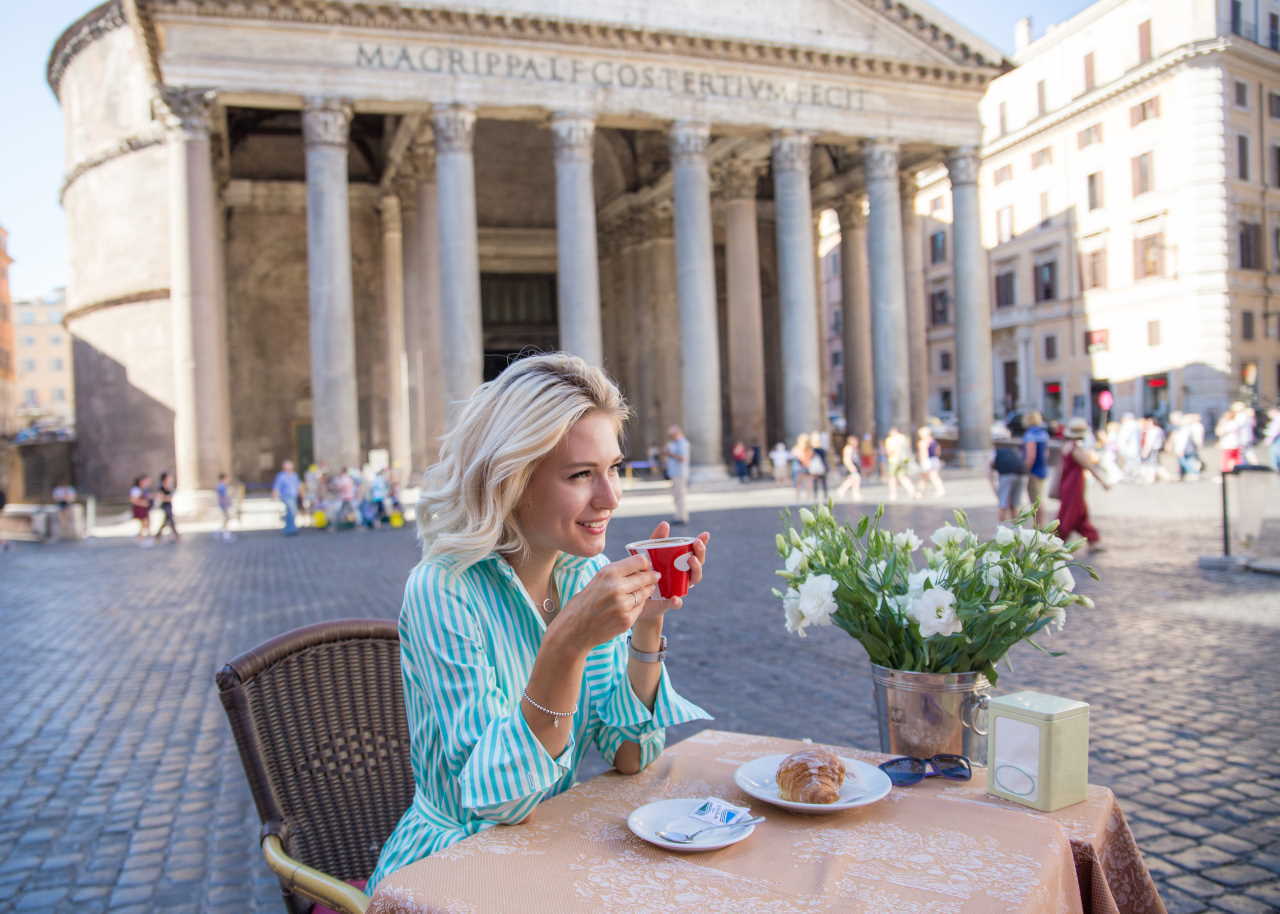
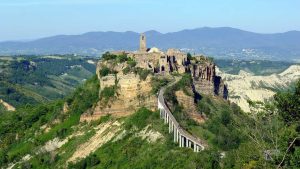
Civita di Bagnoregio, Caprarola, Bomarzo – DISCOVERING HIDDEN TREASURES OF ITALY
Italy is a country rich in hidden treasures and captivating destinations where history, art, and natural beauty come together in a unique and unforgettable experience. Among the lesser-known yet equally fascinating gems, Civita di Bagnoregio, Caprarola, and Bomarzo stand out. Let’s discover what makes these places so special.
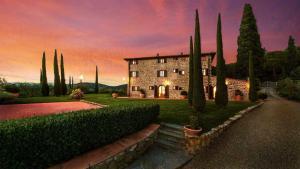
Wonders of Tuscany: a journey through Art, History and Food and Wine
Located in the heart of Italy, Tuscany is a true treasure to discover. Lush hills, luxurious vineyards, picturesque rural landscapes, historic villas, enchanting medieval cities and an atmosphere of refined timeless beauty have won the hearts of visitors from all over the world.
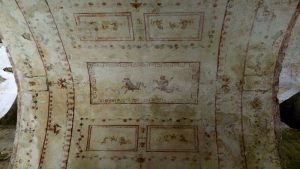
The Domus Aurea: a hidden masterpiece of Ancient Rome
Built by Emperor Nero in the 1st century AD, the Domus Aurea in Rome is an extraordinary monument that stands as a tangible symbol of the luxury and grandeur of ancient Roman civilization
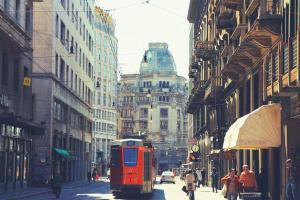
Guide of Milan for Newbies
Our Quick Guide to Milan for Beginners will accompany you in discovering the treasures of this fascinating and hectic metropolis, providing you with essential information on the main attractions.

Milan: A food and wine experience not to be missed
Milan is much more than a fashion capital; it is also a top culinary destination. With its traditional cuisine, cosmopolitan culinary scene, food markets, and innovation, the city offers a complete eno-gastronomic experience.

Roman coast: a journey through history, sea and unique atmospheres
Discovering the Roman Coastline: A Journey through History, Sea, and Unique Atmospheres by Sarah Strol illustration by franco rea Roman Coastline We arrived in Rome
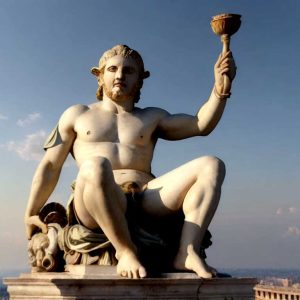
A Story of Rome
TRAVELS IN SPACETIME A Story of Rome It was a sweltering day in July, with the sun beating down on me like a burst of
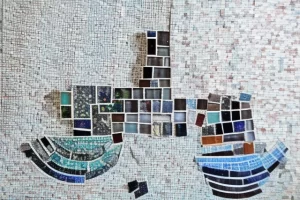
Events and Exhibitions Italy 2023
Welcome to the fantastic world of events and exhibits in Italy in 2023! This year, we’re offering a selection of must-see events ranging from art to music, gastronomy to technology. Get ready to mark your calendars and plan a trip to discover the wonders of our country.
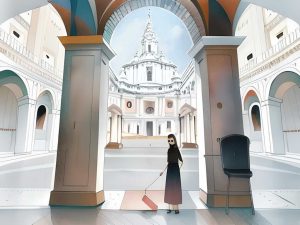
Discovering Rome’s “Hidden Treasures”
Discovering the “hidden treasures” of Rome Welcome to a fascinating journey through a less frequented Rome, different from the usual famous monuments but rich in
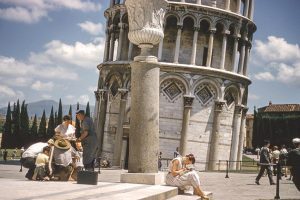
My Daily Excursions from Rome
“I am always looking for unforgettable experiences, and when I arrived in Rome, I was advised to participate in daily group or private excursions.”
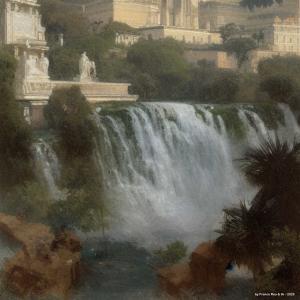
Impossible Rome
a gallery of images to you, created using artificial intelligence on the theme of “Impossible Rome”
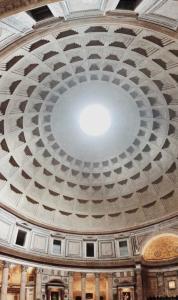
The Pantheon, great masterpiece of Roman architecture
Pantheon Contents The Pantheon Great masterpiece of Roman architecture. It is one of the ancient monuments best preserved in the world. We suggest a visit
Private Tours of Rome
-
Rome by night Tour and Dining Experience – Private Tour
94,00€ – 187,00€A pleasant walk through the ancient districts of Rome and dinner in an intimate and elegant restaurant in Trastevere
Rome | Dinner | By night Tour | 4 hrs.
-
Villa Adriana and Villa d’Este Private Tour Rome to Tivoli
155,00€ – 371,00€Tivoli, guided visit of Villa Adriana e Villa d’Este, two splendid villas at 20 km far from Rome, a renowned area since the Roman time
Tivoli | Private Guided Tour | By car | 4/5 hrs.
-
Private Walking Tour of Rome | 3 hours tour
63,00€ – 158,00€Private walking tour of Rome with local guide for 3 hours, ecological and entertaining way to explore the major attractions and the back streets of Rome
Rome | Walking Tour | Private Guide | 3 hrs.
-
3 Tours Package in Rome with Your Local Guide and Driver
271,00€ – 727,00€Tours Package in Rome with your Local Guide and Driver, your access key to Rome. We take care of everything, so you can take the most of your holiday
Rome | Private Guide | Private driver | Taylor made Tours
-
Shore excursion Civitavecchia Rome
221,00€ – 575,00€Discover the major attractions of Rome with who live there! Full day Private Tour from Civitavecchia Port to Rome
Advanced reservation PROMO code
Civitavecchia Rome | Guided Tour | Luxury Car | 8/9 hrs.
-
Modern and Contemporary Rome Tour
165,00€ – 415,00€Book now your detailed tour of contemporary Rome and let yourself be amazed by its architectural wonders!
Rome Italy | Expert Guide | Car&Drive | 6 hours

